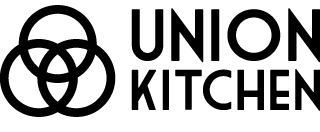What's up with SEO?
What is SEO?
You may have heard people mention the term SEO before. SEO stands for Search Engine Optimization. It is the process of making sure search engines (and importantly people!) can find your site.
Despite the acronym, SEO is as much about people as it is about search engines themselves. It’s about understanding what people are searching for online, the answers they are seeking, the words they’re using, and the type of content they wish to consume.” Moz Beginner Guide to SEO
With the right SEO habits, your site can rank higher (this means it will appear higher in search results), making it easier for people to find you. The more visitors you have on your site, the more likely you are to connect with your core consumer.
How do Search Engines Work?
If we are going to optimize for search engines, we need to know how they work.
All search engines have one primary objective: connect users with the most relevant and trustworthy search results as possible. To accomplish that, search engines are designed as super efficient, hyper-organized libraries with access to resources from all around the world. They catalog as much information as possible in something known as an index. When you type in a request to a search engine, the search engine scours the index and provides ranked results.
You can think of the search and catalog process in three buckets: (1) Discovery, (2) Relevance, and (3) Authority.
Discovery: Search engines, like Google, send out crawlers to find new and updated content. They start by finding a few web pages, and then build out from there, following links on those webpages to discover new URLs.
Relevance: Search engine crawlers store information in a massive index, or database of all the discovered content that has been deemed good enough for users. Crawlers determine the relevancy of your content through indexing. The crawlers look for signals like keywords, back-end code (tags, descriptions, and instructions), and links. If your site has not been indexed, it will not show up in search results.
Authority: Crawlers then rank the content based on the site’s SEO authority. Authority is loosely determined by: how frequently your content is talked about, shared, and cited in other online sources. Specifics on how Google and other search engines determine is authority is based on complex algorithms. The best strategy is to produce high quality content and then get others to share your high quality content.
Search results ranking, or where you appear in a search result, is based on your content’s perceived relevancy and authority.

Where to Start
It doesn’t matter how good your content is if no one can find it. Your website needs to show up! Before anything else, check to see if Google and other major search engines have crawled and indexed pages on your site and complete the set-up checklist below:
Register with Google My Business. This is how Google verifies that you are a real company.
Set up Google Search Console. The search console measures your site’s search traffic on Google and site performance. You will be able to see which queries bring users to your site
Build and submit sitemaps for crawling and indexing through your Google Search Console account. A sitemap is a list of URLs on your website that tells search engines information about the structure of the content. The most widely accepted format for a sitemap is .xml. (*Squarespace autogenerates an XML site map)
Attach Google Analytics to your site through Google Webmaster tools. Check out Google Analytics for Beginners for more details.
Include a link back to your website on all your social media platforms and vice versa.
Add a link to your website to your email signature

Comments